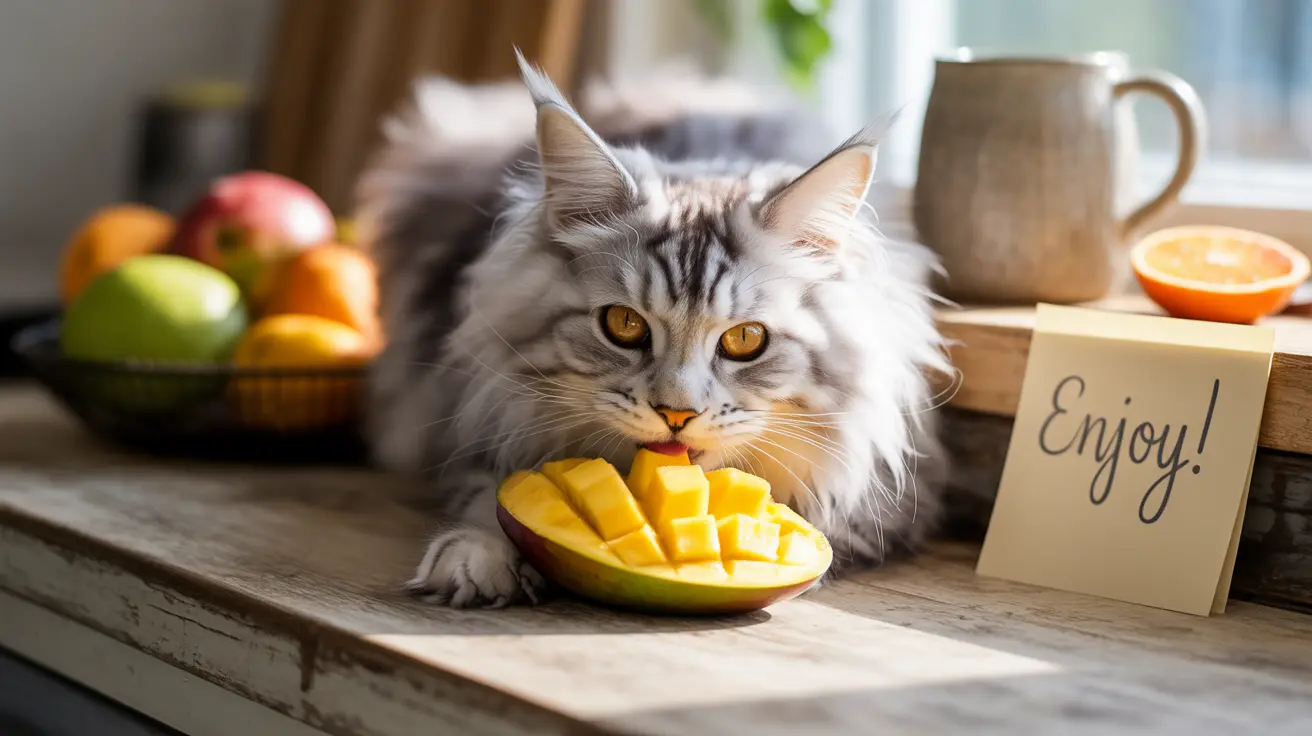As pet owners become more adventurous with their cats' treats, many wonder about offering fruits like mango. While cats are obligate carnivores, meaning they primarily need meat-based nutrition, some fruits can be safely offered as occasional treats. But what about mango? Let's explore everything you need to know about feeding mango to your feline friend.
Understanding the safety, benefits, and potential risks of feeding mango to cats is crucial for responsible pet ownership. While mango isn't toxic to cats, there are important considerations and preparation methods to keep in mind to ensure your cat's safety and well-being.
Safety Guidelines for Feeding Mango to Cats
When it comes to feeding mango to cats, moderation and proper preparation are key. Fresh, ripe mango flesh is non-toxic and safe for cats in small amounts. However, certain parts of the fruit must be completely avoided:
Preparing Mango Safely
Always remove the peel and pit before offering mango to your cat. The pit contains toxic compounds and poses a serious choking hazard, while the peel is difficult to digest and could cause intestinal blockages. Cut the flesh into small, manageable pieces no larger than a standard cat kibble.
Appropriate Serving Size
Limit mango treats to no more than one tablespoon once or twice a week. Even this small amount should only be offered to healthy adult cats without underlying health conditions.
Nutritional Considerations for Cats and Mango
While mangoes are packed with vitamins and minerals beneficial to humans, cats process nutrients differently. Their bodies are designed to derive nutrition primarily from animal proteins, making most of mango's nutritional benefits negligible for felines.
Limited Nutritional Value
Cats can't effectively process plant-based nutrients the way humans do. They synthesize their own vitamin C and receive most necessary nutrients from meat-based proteins. The high sugar content in mango could potentially lead to weight gain or digestive issues if overfed.
Potential Risks and Warning Signs
While mango isn't toxic, there are several risks to consider:
- Digestive upset from excessive sugar intake
- Possible allergic reactions
- Choking hazards from improper preparation
- Potential complications for diabetic cats or those with gastrointestinal sensitivities
Monitor your cat closely after introducing mango for the first time. Watch for signs of digestive distress, unusual behavior, or allergic reactions.
When to Avoid Feeding Mango
Some cats should never be given mango, including:
- Cats with diabetes or obesity
- Those with pancreatitis or sensitive stomachs
- Kittens and senior cats
- Cats with known food sensitivities
Alternative Treats for Cats
Instead of mango, consider these safer alternatives:
- Commercial cat treats formulated for feline nutrition
- Small pieces of cooked lean meat
- Cat-specific dental treats
- Freeze-dried meat treats
Frequently Asked Questions
Can cats safely eat fresh mango, and how much is appropriate as a treat?
Yes, cats can safely eat fresh mango flesh in very small amounts. A suitable serving is about one tablespoon of peeled, pitted, and diced mango no more than once or twice a week.
Why should I avoid giving my cat mango peel and pit?
The mango pit contains toxic compounds and is a serious choking hazard, while the peel is difficult to digest and can cause intestinal blockages. Both parts should always be removed before offering mango to cats.
Are there any health risks for cats eating mango too often or in large amounts?
Yes, excessive mango consumption can lead to digestive issues, weight gain, and potential complications for diabetic cats due to its high sugar content. Large amounts may cause diarrhea or vomiting.
Do cats actually enjoy the taste of mango, and why might some be indifferent?
Cats lack sweet taste receptors and generally don't experience mango's sweetness. While some cats might be curious about the texture or smell, most are indifferent to mango's taste.
What signs should I watch for if my cat reacts badly after eating mango?
Monitor for vomiting, diarrhea, lethargy, difficulty breathing, or signs of allergic reactions like itching or swelling. If you notice any of these symptoms, contact your veterinarian immediately.
Conclusion
While cats can safely eat small amounts of fresh mango flesh as an occasional treat, it's not a necessary or particularly beneficial addition to their diet. If you choose to offer mango to your cat, always prioritize proper preparation and moderate portions. When in doubt, consult with your veterinarian about the best treats for your specific cat's needs and health status.






